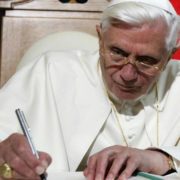The relentless advance of a well-constructed argument was like a phalanx (and later a legion) of words penetrating the public consciousness, leaving adversaries and audiences speechless and ready to surrender.
Christianity, as it spread through a Hellenized Roman world in its early centuries, quickly recognized the power of this method and both adopted and adapted it. Even the Gospel’s pure message of love was articulated through reasoned explanations for love.
It is only natural that when the Mongol Möngke Khan summoned the Franciscan friar William of Rubruck to debate Muslims and Taoists on August 5, 1253, the friar employed the well-honed Aristotelian method. Father William believed he had won the argument based on the criteria he was trained to recognize—leaving his opponents with no arguments to counter.
Yet, as Professor Ge Zhaoguang pointed out in his groundbreaking essay (here), the outcome was more complex than a straightforward rhetorical victory.
Möngke conveyed his view: “But as God has given us five different fingers, He has also given people different paths. God gave you the Bible, yet you Christians do not adhere to it. Is there a record in the Bible mandating people to criticize each other for faults?”
Möngke implied no religion, including Christianity, should exclude other beliefs and criticized Christians for being overly self-assured. He remarked, “God therefore gave you the Bible, which you do not follow. He gave us diviners, whose words we abide by and live peacefully.” Möngke’s position holds credibility. Reportedly, early Mongols did not have a mature religion but believed in the “Eternal Heaven” thus embracing diverse religions.
Möngke was a warrior whose armies conquered half of the known world, and he certainly understood the value of merciless victory. However, as Ge points out, this approach does not apply to religions. Religion and the spirit inhabit a different realm—a realm of feelings and the ineffable. It is a space of love that, if mismanaged, can turn into hate—mighty sentiments indeed.
Historically, the pairing of “the force of reason and the reason of force” led to forced conversions by both Christians and their Muslim contemporaries. The reason of force overtook those who were unwilling to heed the force of reason.
In the Church’s gradual transformation process, Pope Francis is now turning a new page in that history. He extends his heart to people of all religions, focusing his arguments on love, mercy, and hope rather than logic. He understands that the reasons for love are insufficient; love exists without reasons, defying logic, and there are no human, logical reasons why God should love sinful humans, and yet Catholics believe he does.
With this approach, Francis might have succeeded in Möngke Khan’s debate, and indeed, he is making progress with people who have been resistant to Christian teachings for centuries. Pope Francis’s recent appeal to the imaginative power of art in understanding Christianity in today’s world aligns with this approach, as noted by the Undersecretary for Culture of the Holy See, Antonio Spadaro.
Yet, history is not irrelevant and cannot be dismissed on a whim. It underpins everything that exists today. Nonetheless, force and reason must be considered, as they dominate our world, and the force of reason has, indeed, its reasons.
The Pope reaches toward love with all his might, but the enduring reasons cannot simply be abandoned. Therefore, perhaps the true theological endeavor of the Church should be to connect the past with the future, love with reason, and build upon these connections without creating too many divisions.
On a coincidental note, August 5 is the feast day of Our Lady of the Snows, to whom the Basilica of Santa Maria Maggiore is dedicated. Pope Francis wishes to be buried there rather than in the St. Peter’s Basilica.
- In Partnership with Appia Institute.







Iraq’s most revered Shia cleric, Grand Ayatollah Ali al-Sistani meets with Pope Francis and his delegation at his home in the holy city of Najaf (6 March 2021).